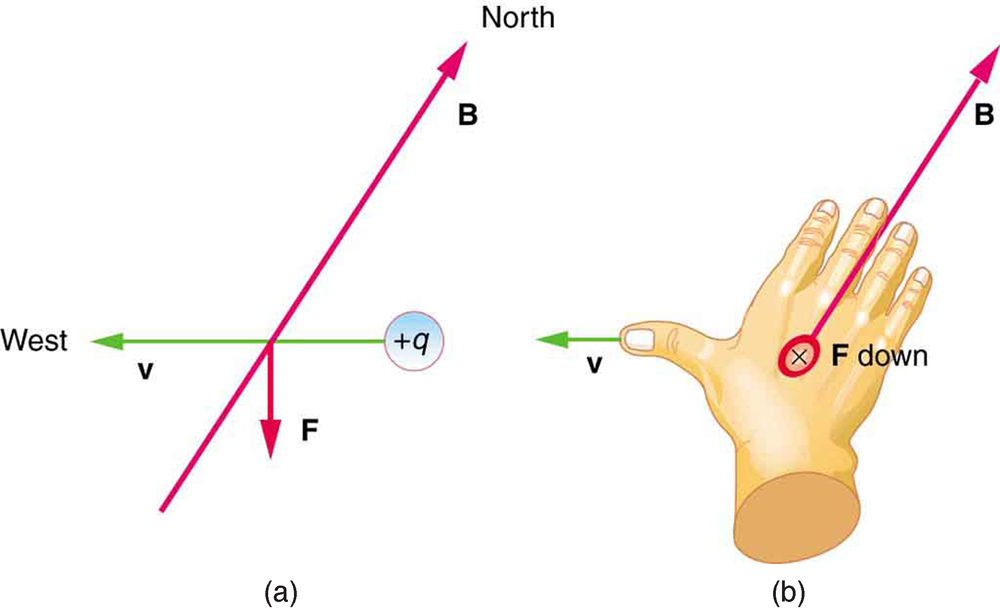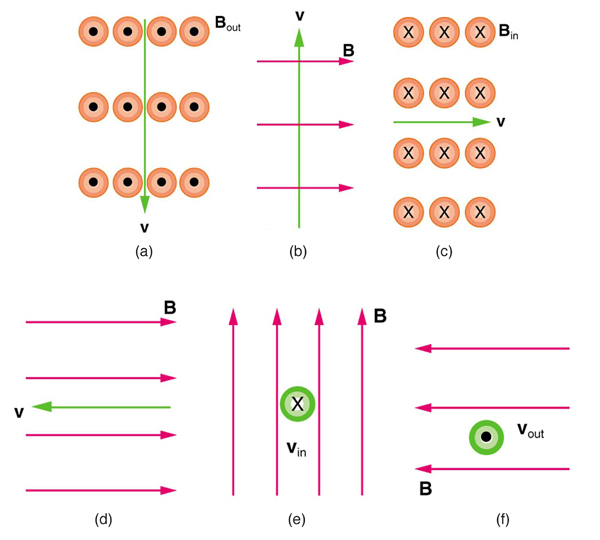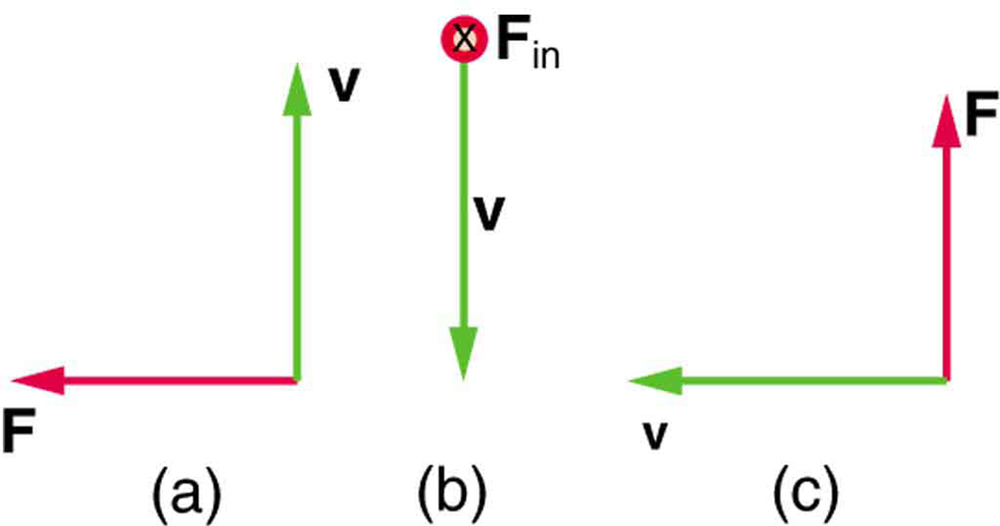| << Chapter < Page | Chapter >> Page > |
With the exception of compasses, you seldom see or personally experience forces due to the Earth’s small magnetic field. To illustrate this, suppose that in a physics lab you rub a glass rod with silk, placing a 20-nC positive charge on it. Calculate the force on the rod due to the Earth’s magnetic field, if you throw it with a horizontal velocity of 10 m/s due west in a place where the Earth’s field is due north parallel to the ground. (The direction of the force is determined with right hand rule 1 as shown in [link] .)

Strategy
We are given the charge, its velocity, and the magnetic field strength and direction. We can thus use the equation to find the force.
Solution
The magnetic force is
We see that , since the angle between the velocity and the direction of the field is . Entering the other given quantities yields
Discussion
This force is completely negligible on any macroscopic object, consistent with experience. (It is calculated to only one digit, since the Earth’s field varies with location and is given to only one digit.) The Earth’s magnetic field, however, does produce very important effects, particularly on submicroscopic particles. Some of these are explored in Force on a Moving Charge in a Magnetic Field: Examples and Applications .
If a charged particle moves in a straight line through some region of space, can you say that the magnetic field in that region is necessarily zero?
What is the direction of the magnetic force on a positive charge that moves as shown in each of the six cases shown in [link] ?

(a) Left (West)
(b) Into the page
(c) Up (North)
(d) No force
(e) Right (East)
(f) Down (South)
Repeat [link] for a negative charge.
What is the direction of the velocity of a negative charge that experiences the magnetic force shown in each of the three cases in [link] , assuming it moves perpendicular to

(a) East (right)
(b) Into page
(c) South (down)
Repeat [link] for a positive charge.
What is the direction of the magnetic field that produces the magnetic force on a positive charge as shown in each of the three cases in the figure below, assuming is perpendicular to ?

(a) Into page
(b) West (left)
(c) Out of page
Repeat [link] for a negative charge.
What is the maximum force on an aluminum rod with a charge that you pass between the poles of a 1.50-T permanent magnet at a speed of 5.00 m/s? In what direction is the force?
perpendicular to both the magnetic field lines and the velocity
(a) Aircraft sometimes acquire small static charges. Suppose a supersonic jet has a charge and flies due west at a speed of 660 m/s over the Earth’s south magnetic pole, where the magnetic field points straight up. What are the direction and the magnitude of the magnetic force on the plane? (b) Discuss whether the value obtained in part (a) implies this is a significant or negligible effect.
(a) A cosmic ray proton moving toward the Earth at experiences a magnetic force of . What is the strength of the magnetic field if there is a angle between it and the proton’s velocity? (b) Is the value obtained in part (a) consistent with the known strength of the Earth’s magnetic field on its surface? Discuss.
(a)
(b) This is slightly less then the magnetic field strength of at the surface of the Earth, so it is consistent.
An electron moving at in a 1.25-T magnetic field experiences a magnetic force of . What angle does the velocity of the electron make with the magnetic field? There are two answers.
(a) A physicist performing a sensitive measurement wants to limit the magnetic force on a moving charge in her equipment to less than . What is the greatest the charge can be if it moves at a maximum speed of 30.0 m/s in the Earth’s field? (b) Discuss whether it would be difficult to limit the charge to less than the value found in (a) by comparing it with typical static electricity and noting that static is often absent.
(a) (taking the Earth’s field to be )
(b) Less than typical static, therefore difficult

Notification Switch
Would you like to follow the 'College physics' conversation and receive update notifications?